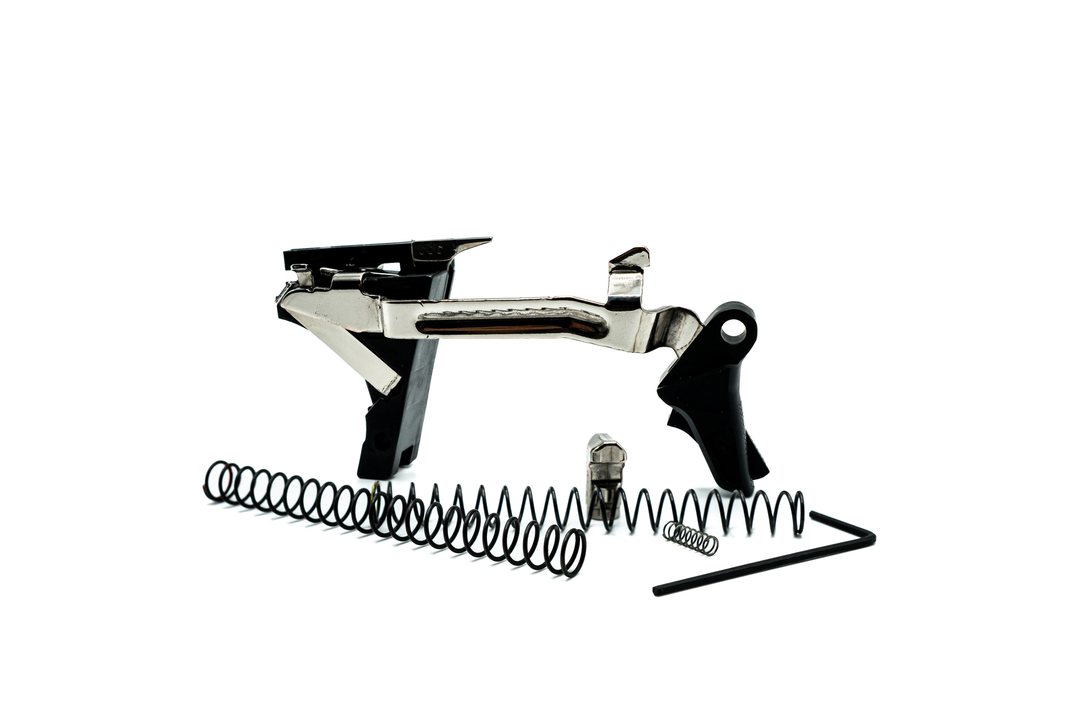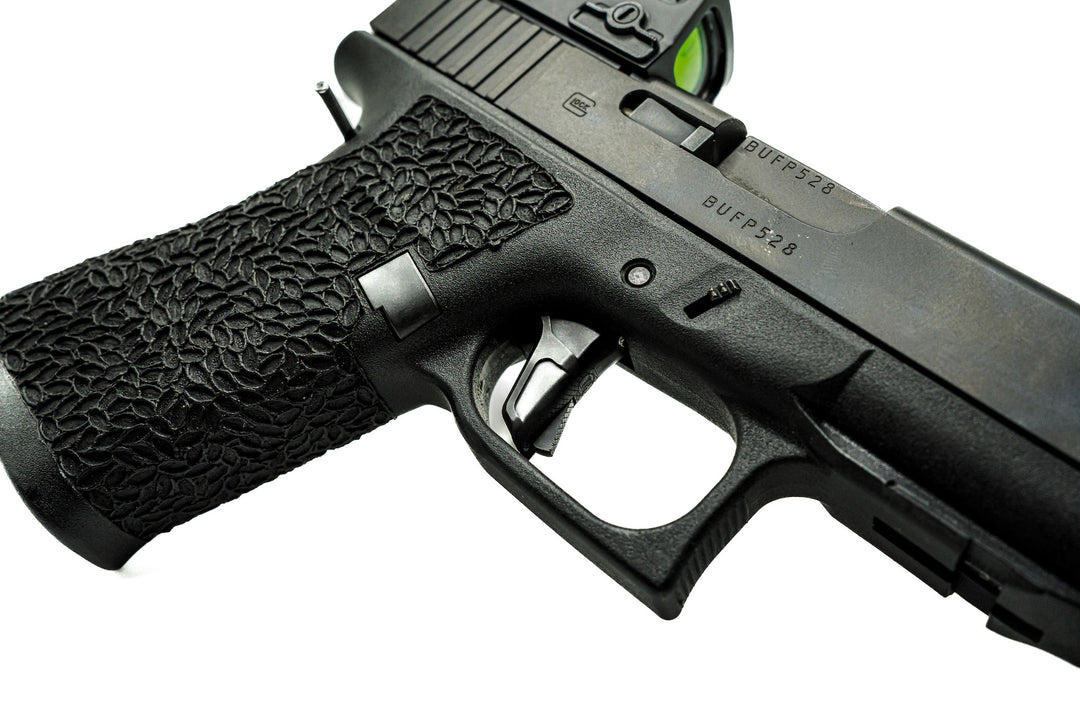OEM vs Aftermarket vs VEX Trigger Shoes – Johnny Glocks Data
OEM vs Aftermarket vs VEX Trigger Shoes – Real Performance Data
Video Walkthrough: Watch on YouTube
This video breaks down the real, measurable differences between OEM, aftermarket, and VEX trigger shoes. From pre-travel and over-travel to reset efficiency and safety, we lay out the performance side-by-side with data and slow-motion footage—no fluff, just results.
Jump to a Section
- 00:00 – Intro
- 01:12 – Overview
- 03:45 – Pre-Travel Comparison
- 05:30 – Over-Travel
- 07:10 – Reset
- 08:35 – Trigger Pull Data
- 10:05 – Why VEX Wins
- 11:20 – What to Choose
- 12:15 – Wrap-Up
OEM vs Aftermarket vs VEX Trigger Shoes: A Detailed Comparison
When it comes to Glock performance, few components impact feel and function as much as the trigger shoe. While factory OEM trigger shoes get the job done, aftermarket options—and specifically the VEX shoe—change how pre-travel, over-travel, and reset feel in the hand. In this breakdown, we’ll compare OEM Glock triggers, aftermarket trigger shoes, and the VEX trigger shoe side by side, focusing on measurable differences rather than hype.
OEM Glock Trigger Shoes
The OEM Glock trigger shoe is built for reliability and safety above all else. It’s consistent, simple, and works across frames. However, that safety margin comes at the cost of efficiency. OEM triggers typically have noticeable pre-travel before engagement and longer over-travel after the break. Reset is reliable but not as short or crisp as many shooters prefer. For most Glock owners, the OEM option is “good enough,” but it isn’t optimized for speed or precision shooting.
Aftermarket Trigger Shoes
Aftermarket Glock triggers cover a wide spectrum. Some aim to lighten pull weight, others to create a flat-faced feel, and others to shorten reset. But performance varies widely. Many aftermarket shoes do improve reset and feel, but they often sacrifice a degree of consistency or introduce safety concerns if not properly tested. One common issue is inconsistent sear engagement, which can compromise reliability. In short, aftermarket triggers can offer improvements, but results depend heavily on brand and installation quality.
The VEX Trigger Shoe
The VEX trigger shoe was designed to reduce wasted movement while preserving Glock’s safety principles. Testing shows the VEX reduces both pre-travel and over-travel compared to OEM and most aftermarket options. The reset is shorter and more tactile, which translates to faster follow-up shots and better efficiency for shooters who demand precision. Importantly, the VEX maintains proper sear engagement, keeping safety intact while improving performance.
Side-by-Side Comparison
- OEM: Reliable, but longer pre-travel and reset.
- Aftermarket: Mixed results; may improve feel but sometimes inconsistent with safety.
- VEX: Shorter pre-travel, less over-travel, crisp reset, and reliability preserved.
Why This Matters
Understanding these differences is less about “better vs. worse” and more about what’s right for your needs. An OEM Glock trigger is the baseline: safe and functional. Aftermarket triggers offer variety but can be hit or miss. The VEX provides measurable improvements in reset efficiency and trigger travel, making it appealing for shooters who want performance without cutting corners on safety.
Conclusion
Whether you stick with OEM, explore aftermarket, or test out the VEX, the key is understanding how trigger geometry affects performance. Pre-travel, over-travel, and reset efficiency aren’t just technical details—they directly shape your shooting experience. For anyone serious about dialing in their Glock, this knowledge is just as important as the hardware itself.
Tags: OEM Glock Trigger Shoes, Aftermarket Glock Triggers, Glock Reset Comparison, Trigger Pull Data, Glock Performance Upgrades










